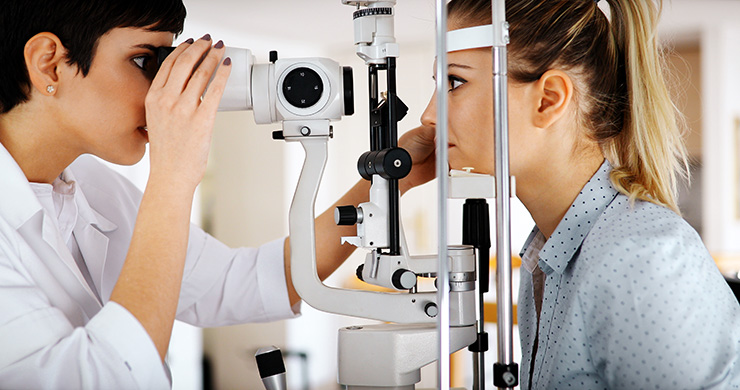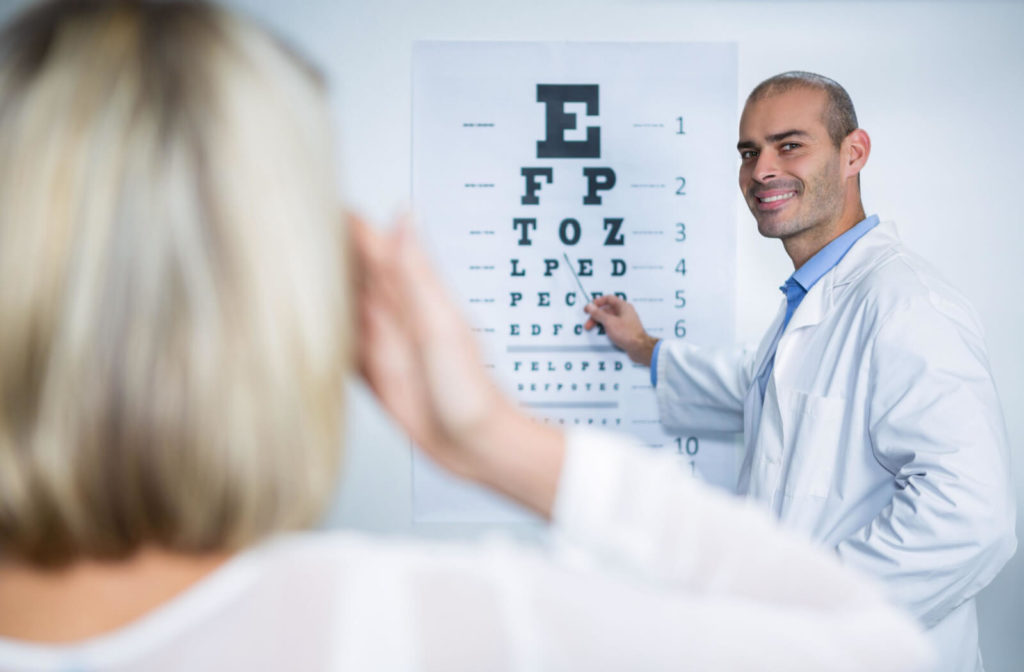Locate a Trusted Optometrist Chino for Household Eye Treatment Solutions
Wiki Article
Discovering the most recent Technological Developments in Optometry and What They Mean for Eye Doctors
In the ever-evolving area of optometry, current technical developments are improving just how professionals approach eye treatment. From the accuracy of Optical Coherence Tomography to the nuanced understandings offered by AI-driven analysis devices, these developments are establishing brand-new requirements in client evaluation and therapy. Teleoptometry is positioned to redefine availability, guaranteeing that knowledge transcends geographical restrictions. As these advancements permeate the technique, optometrists are confronted with the difficulty of accepting these tools to boost client outcomes. The question remains: how will these technical changes redefine the functions and obligations within the career?Advancements in Diagnostic Equipment
Progressing the area of optometry, developments in diagnostic tools have actually transformed the method eye treatment professionals evaluate and identify aesthetic disabilities and ocular problems. The past decade has actually witnessed substantial technical innovations, enabling more accurate and extensive analyses. Optical Comprehensibility Tomography (OCT), for instance, gives high-resolution cross-sectional photos of the retina, permitting the early detection of conditions such as glaucoma and age-related macular deterioration. This non-invasive imaging technique has actually come to be indispensable in contemporary optometric technique.One more trick technology is the introduction of sophisticated corneal topography systems, which map the surface area curvature of the cornea with precision. These tools are particularly valuable for suitable call lenses and identifying corneal conditions. Digital retinal imaging has actually transformed conventional ophthalmoscopy, using thorough, scenic views of the retina that help with thorough aesthetic assessments.
The advancement of wavefront aberrometry has actually additionally been crucial, making it possible for the evaluation of refractive mistakes with unrivaled precision (Optometrist Chino). This modern technology assists in tailoring restorative lenses and enhancing medical results for refractive surgical treatments. Collectively, these analysis innovations encourage optometrists to supply exceptional patient treatment, ensuring early treatment and tailored treatment strategies, eventually improving aesthetic health and wellness end results
AI in Patient Administration
Structure on the foundation of sophisticated analysis tools, the incorporation of man-made knowledge (AI) in patient administration stands for a transformative jump for optometry. AI systems are increasingly employed to enhance performance, precision, and personalization in patient care. By evaluating substantial amounts of data, AI can identify patterns and anticipate prospective eye conditions, enabling eye doctors to tailor treatments extra effectively. This capacity is important in taking care of persistent eye conditions such as glaucoma and diabetic person retinopathy, where early discovery and continuous tracking are essential.Moreover, AI-driven systems facilitate streamlined patient interactions and administrative procedures. Automated organizing, virtual appointments, and individualized follow-up plans not only enhance individual contentment yet also optimize time administration for practitioners. These systems can triage patients based upon the necessity of their problems, guaranteeing that those in vital requirement receive timely focus.
Furthermore, AI enhances decision-making by giving eye doctors with evidence-based recommendations and therapy pathways. By incorporating information from digital wellness documents, AI tools supply insights that notify clinical decisions, lowering the danger of mistakes and improving individual outcomes. As AI proceeds to develop, its duty in patient management will likely broaden, improving the landscape of optometric treatment.
Breakthroughs in Retinal Imaging
In the realm of optometry, retinal imaging has witnessed impressive technical advancements that are boosting diagnostic capabilities and person treatment. Developments such as Optical Comprehensibility Tomography (OCT) and fundus photography have actually changed just how eye doctors analyze the retina and imagine. OCT, particularly, gives high-resolution, cross-sectional pictures of the retina, enabling for the comprehensive assessment of its layers. This capacity is indispensable for early discovery and administration of problems like glaucoma, diabetic retinopathy, and age-related macular deterioration.Enhanced imaging techniques like OCT angiography are additional refining diagnostic accuracy. This non-invasive technique maps blood circulation in the retina, providing important understandings into vascular wellness without the need for color shots. Furthermore, flexible optics modern technology is being incorporated into retinal imaging systems to fix ocular aberrations, providing unprecedented picture clarity. Such developments facilitate the identification of min retinal changes that can represent condition progression.
Furthermore, developments in expert system are increasing retinal imaging by making it possible for automatic evaluation of huge datasets. These systems help optometrists in recognizing patterns indicative of pathology, thus improving diagnostic accuracy pop over to this web-site and efficiency. Collectively, these technologies are changing retinal imaging into a foundation of contemporary eye care, enhancing results and broadening therapeutic possibilities.
Teleoptometry's Expanding Duty
Teleoptometry is increasingly coming to be an important part of eye care, driven by improvements in electronic communication and diagnostic tools. This is specifically valuable in underserved and country areas where accessibility to specialized eye care is commonly minimal.The assimilation of man-made knowledge (AI) additional enhances teleoptometry, allowing the analysis of visual information and assisting in the detection of eye conditions such as glaucoma and diabetic retinopathy. AI-powered algorithms can swiftly analyze intricate imaging data, providing optometrists with useful understandings that bolster professional decision-making.
Moreover, teleoptometry sustains continuity of care via smooth combination with digital health and wellness records (EHRs), allowing eye doctors to keep detailed person backgrounds. When seeking advice from with various experts., this makes certain that patients obtain regular and customized treatment even.
In spite of these benefits, challenges stay, including making sure information safety and handling individual expectations. However, teleoptometry stands for a substantial stride in the direction of even more accessible, effective, and patient-centered eye treatment. As innovation develops, its duty is poised to increase better.

Future Fads in Eye Treatment
A myriad of innovative patterns is readied to reshape the future of eye treatment, driven by technological developments and the progressing requirements of patients. One considerable fad is the assimilation of man-made intelligence (AI) in diagnostics, which assures great site to enhance the precision and effectiveness of eye examinations. AI formulas can assess huge amounts of information from retinal pictures, possibly detecting problems like diabetic person retinopathy and glaucoma earlier Visit This Link than standard methods.Furthermore, individualized medication is gaining grip in optometry, with genetic screening educating tailored therapy strategies. This method aims to maximize person end results by tailoring treatments to private hereditary profiles. Wearable innovation, such as clever get in touch with lenses, is likewise imminent, offering real-time tracking of intraocular stress or glucose levels, therefore giving constant understandings into systemic and eye health.
The fostering of increased fact (AR) and digital truth (VR) in training and client education is another arising fad. These innovations supply immersive experiences that can improve understanding and abilities both for eye doctors and people. As these fads evolve, optometrists must remain abreast of technological developments to offer cutting-edge treatment, making certain enhanced patient results and fulfillment in the vibrant landscape of eye treatment.
Conclusion

Jointly, these diagnostic improvements encourage eye doctors to provide remarkable patient treatment, guaranteeing very early intervention and tailored therapy methods, eventually improving visual wellness outcomes.

As these technologies continue to advance, eye doctors need to adapt and include them into practice, inevitably enhancing workflow effectiveness and elevating the standard of eye care supplied to clients.
Report this wiki page